As one of the finalists for the seven wonders of the modern world, the temples of Angkor are a proper bucket-list experience. On top of this, Angkor Wat also makes an appearance in Age of Empires (one of my favourite video games). I was really excited to see it with my own eyes, and managed to convince Sara into a three-day itinerary of temple exploration.
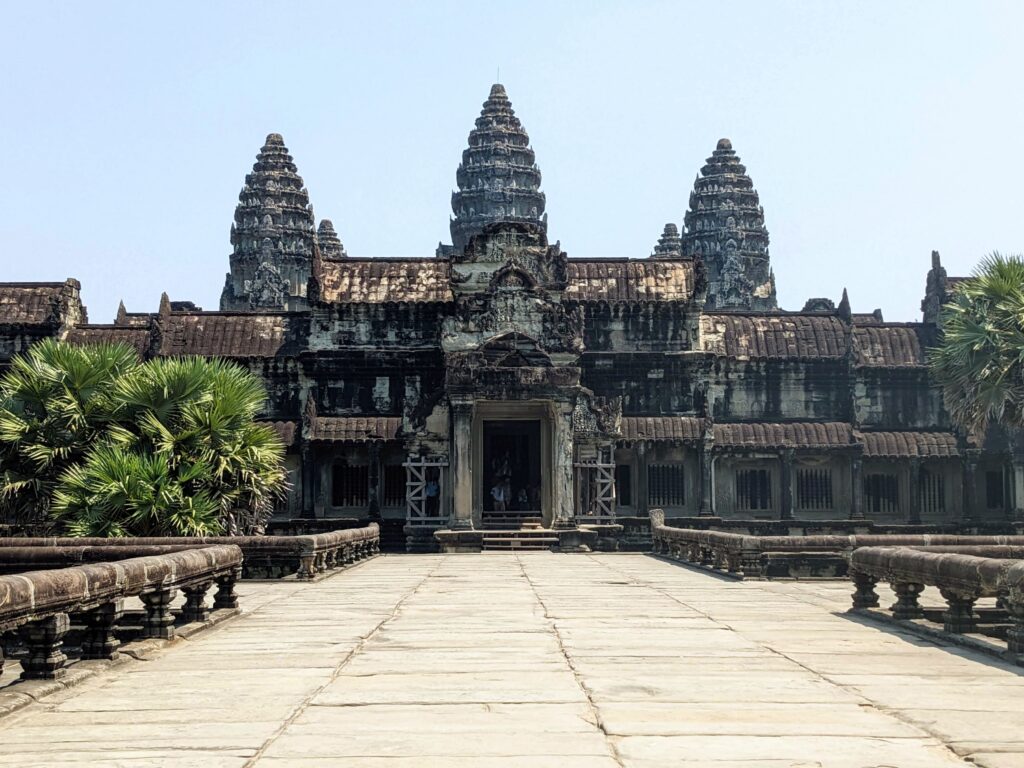
However, temple fatigue is real thing. The Angkor park is huge – it contains literally hundreds of temples, and the afternoon heat and sun certainly aren’t the ideal conditions to be climbing temple steps. Our strategy was to pace ourselves, make use of the cooler mornings, and gradually work up the highlights (which we saved for day three).
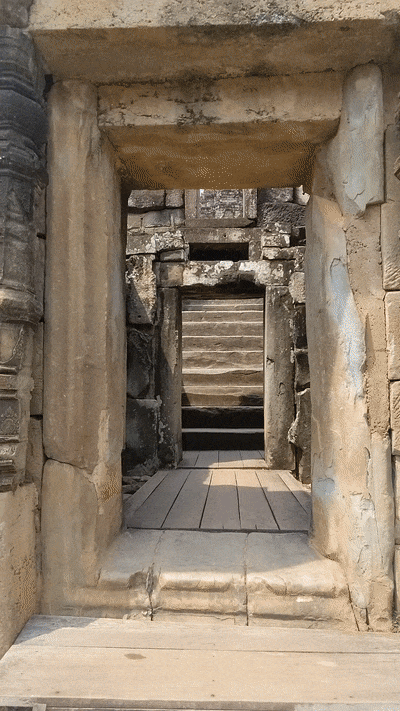
Almost everyone gets around the Angkor park by tuk-tuk. The distances are just too great to walk, and for some reason, tourists aren’t allowed to hire motorbikes in Siem Reap. But of course neither of these are really our style, so instead we opted to hire a couple of city bikes to get around. Thank goodness these bikes were in good condition and the going was relatively flat, because we covered nearly 100 km on them over the next three days.
Day 1: The Roluos temples (30 km cycled)
We started well off the beaten path with a visit to the Roluos group of temples, located 13 km east of Siem Reap (where we were staying). The route to these temples goes along the main road between Siem Reap and Phnom Penh, so it was probably the least relaxing cycle of our stay.
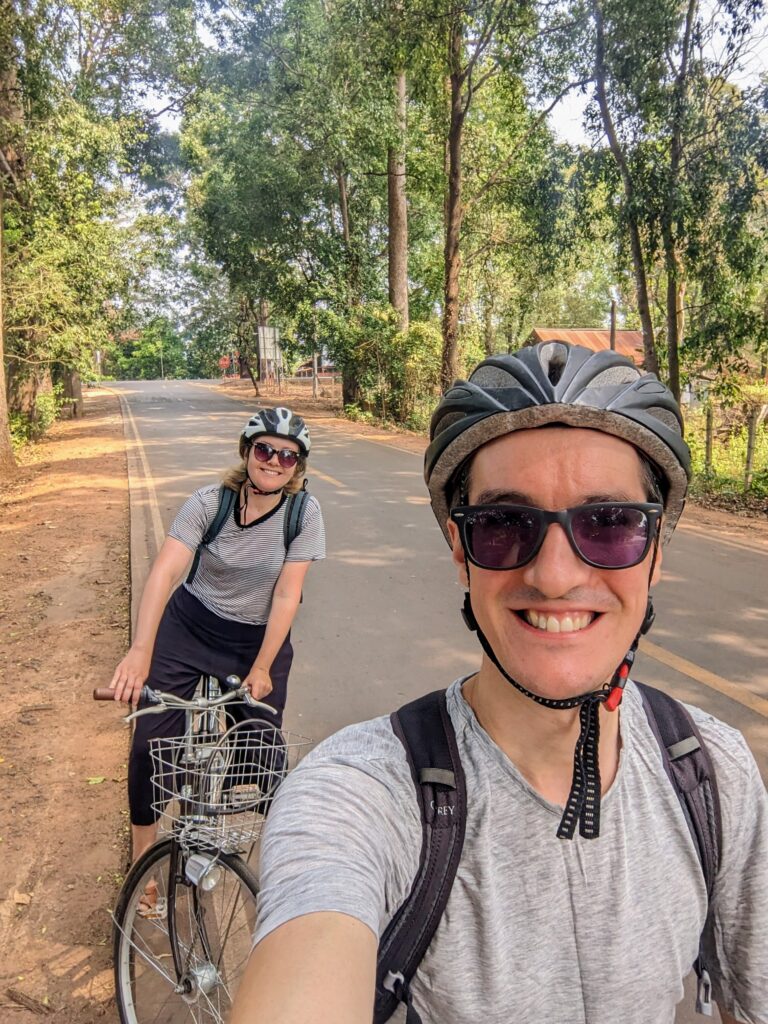
This group consists of a trio of temples; Bakong, Preah Ko, and Lolei. These are the oldest in the Angkor area, with each temple being completed between 879 and 893 AD.
Despite the slight slog of a journey, arriving at the temples was immensely rewarding. Not only did we have each temple to ourselves for at least some of the time, but we were also the only ones brave (or stupid) enough to have attempted the journey on bicycles. In fact, there were about ten times as many children cycling to and from school (past the temples) as there were tourists. I did wonder what it must be like growing up cycling past ancient temples on your school commute – let’s just say it was a bit of a contrast to the bus I used to take to my primary school in Eltham.
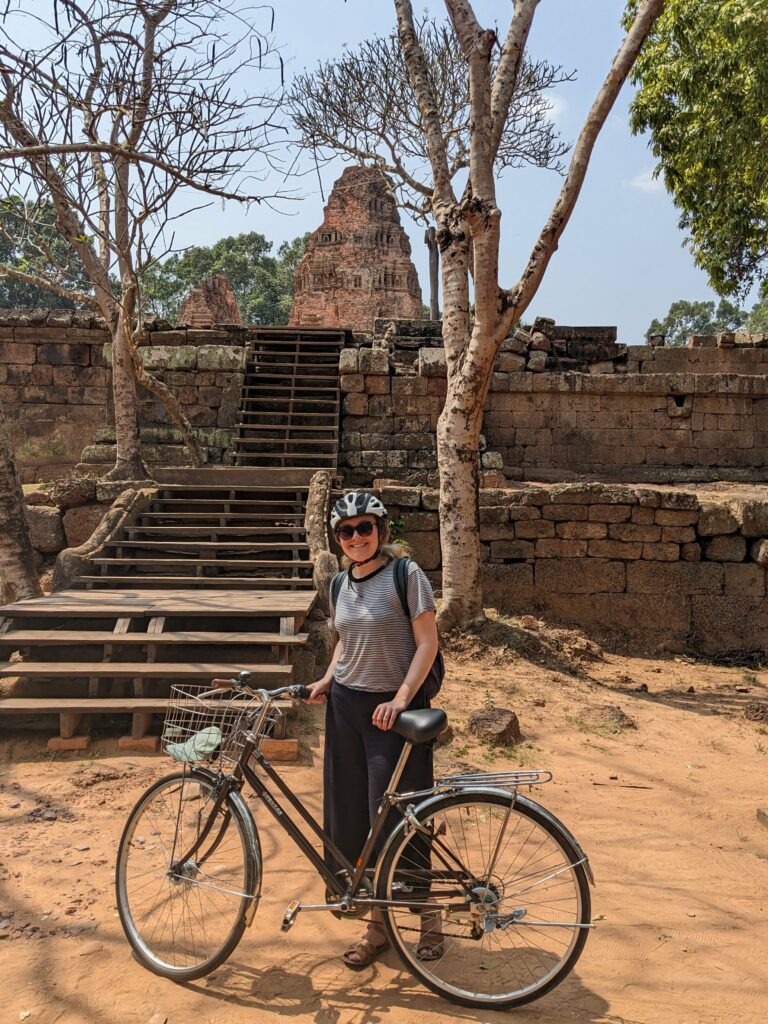
Day 2: The grand circuit (40 km cycled)
On our second day we upped the temple tempo with a lap around the “grand circuit” road. We left the hotel shortly after sunrise and powered through the first 13 km to Ta Prohm temple. This temple had been abandoned for so long that it had been gradually reclaimed by nature, with trees literally growing straight out of a few towers, while some walls have become so entangled with roots that I’m pretty sure they’re now holding up what’s left of the wall.
This temple also featured in the 2001 movie Tomb Raider starring Angelina Jolie, and it’s not hard to see why this location was selected.
Next, we cycled 10 km through dense forest to reach Neak Pean, a small temple located right in the middle of a massive rectangular lake, connected to the lake shore via a long and sunbaked boardwalk. The temple itself was beautifully serene, and rather confusingly set in a mini-lake within an island in the centre of the larger lake.
Just 2 km along the grand circuit road is Preah Khan, yet another stunning temple. Unbeknownst to us, we approached this temple from the lesser-used East Entrance, and were confused by just how few fellow tourists were about. We’d later realise that this is actually a great strategy to explore temples while also avoiding the largest tour groups!
Unlike Ta Promh (the Tomb Raider temple), Preah Khan has been extensively restored, allowing visitors to get a feeling for how the temple must have felt in its prime. The video below shows me walking only half of the temple’s length, so you can imagine how much more there was to see!
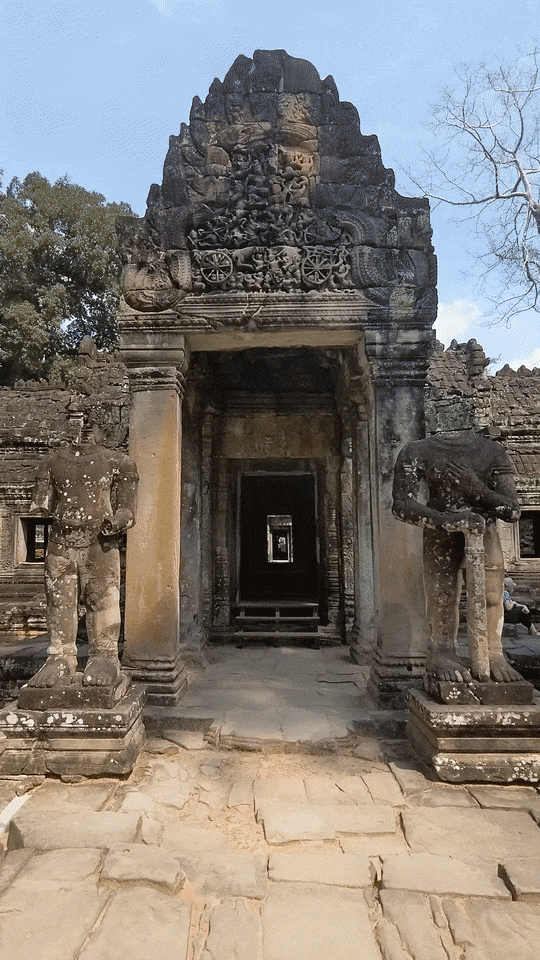
We rounded off the day with a cycle through Ankor Thom – the 9 km² final capital of the Khmer empire. This involved passing through one of the four giant gates in the city walls.

This was where cycling really came into its own, as it afforded us incredible views of the ancient constructions and also gave us the option to pause at any point to savour the views.
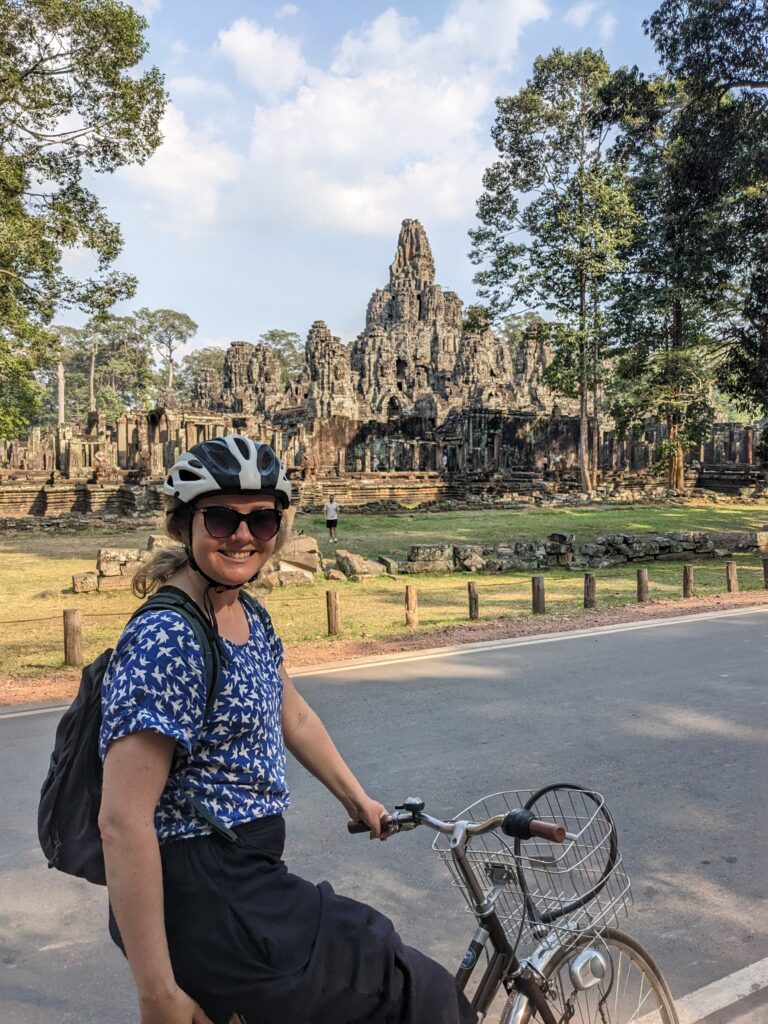
And just as we were starting to run out of steam, we caught our first glimpse of Angkor Wat. The afternoon sun had cast a golden glow over its many towers, and it would have been rude not to stop to catch our breath.
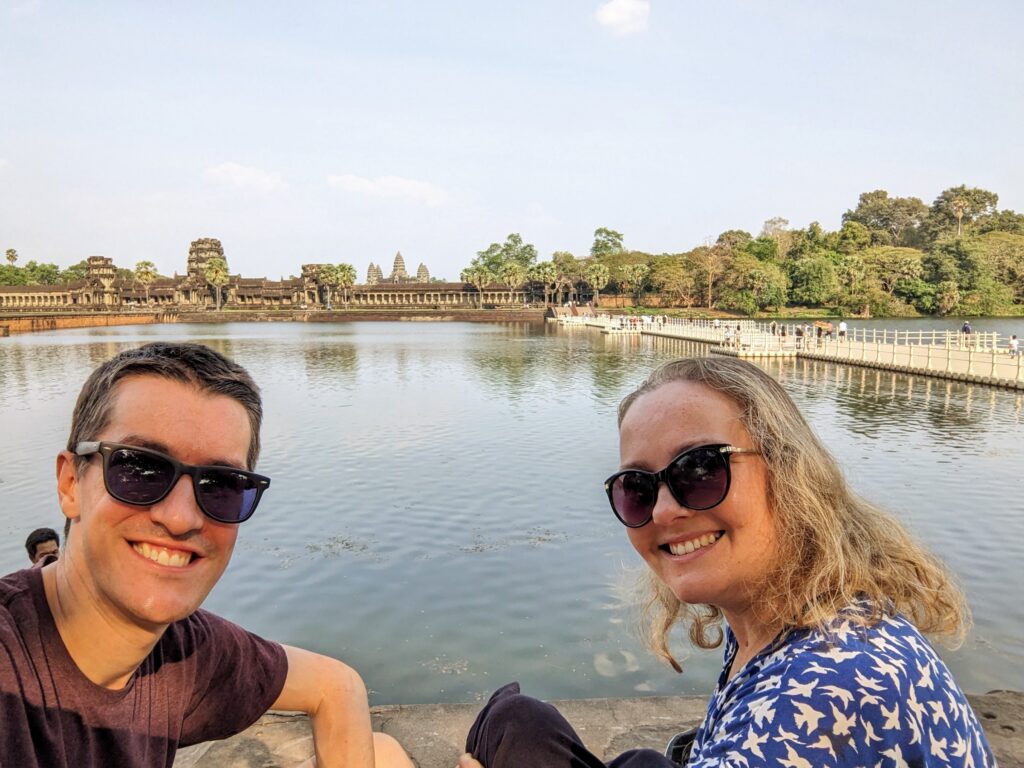
Day 3: Angkor Wat at sunrise (24 km cycled)
We left our hotel at 5:20am and cycled through the night to reach Angkor Wat before dawn. Sunrise at this temple is a big deal and features on almost every itinerary, and we’d read some pretty disappointed tales about just how crowded it can get. So while thousands of people jostled for position outside the west gate, we doubled down on our strategy of heading to the “wrong” gate and approached from the east. We passed through the temple gate at 6.02am, just as the cicadas abruptly broke out into song and the first light appeared in the sky, and within seconds the chorus was nearly deafening.
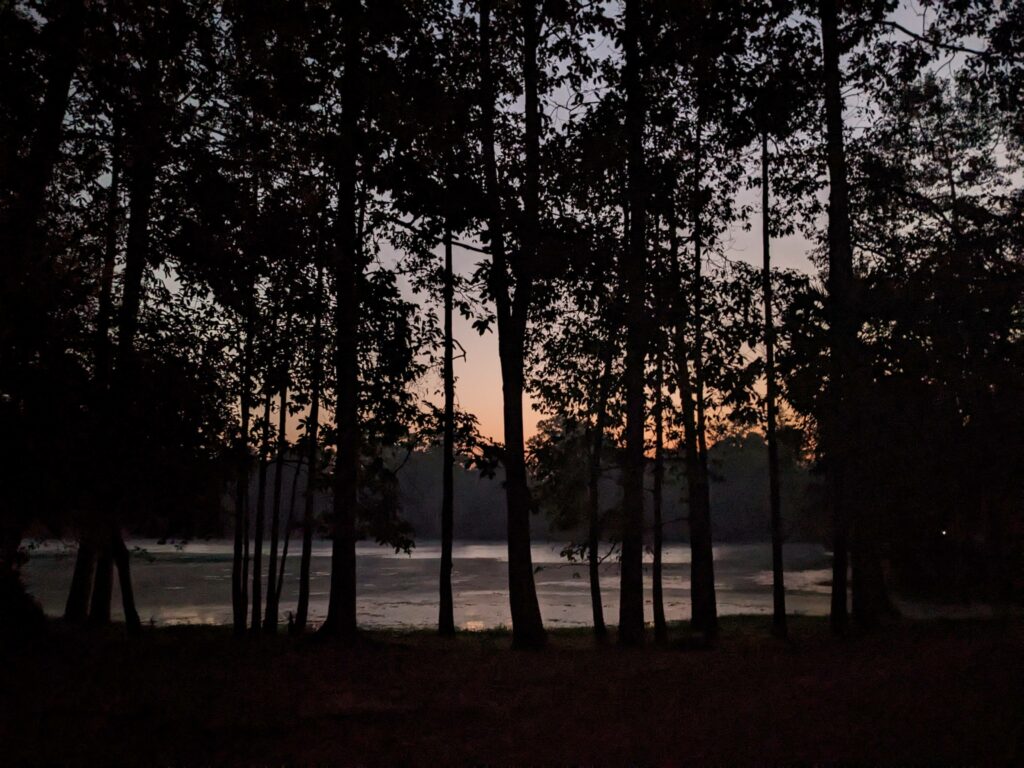
Exploring the empty temple in the pre-dawn light was absolutely breathtaking, and we did our best to enjoy the moment as well as snap a few photos. We genuinely couldn’t believe that we had one of the world’s busiest sights all to ourselves.
After a half-lap of the temple, we emerged opposite the west gate, and could see hoards of fellow visitors heading up through the main entrance directly towards us.
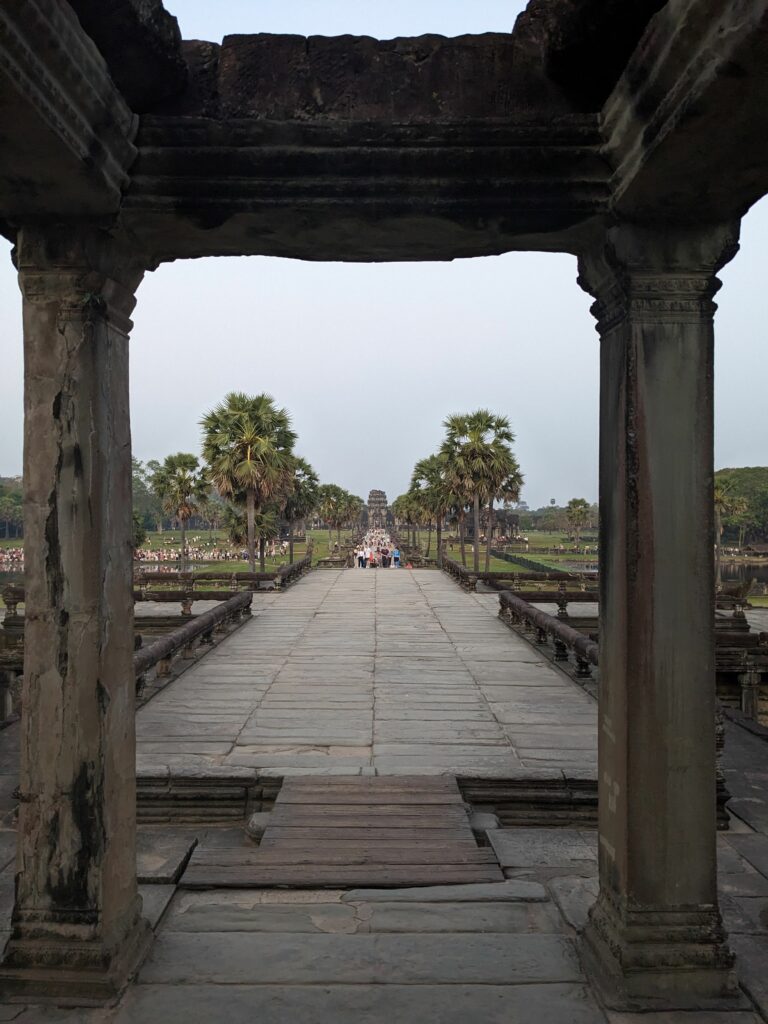
We made an abrupt about-turn, and with sunrise imminent, made a beeline for a perch protruding from the north side of the temple that we’d scoped out as a good spot.
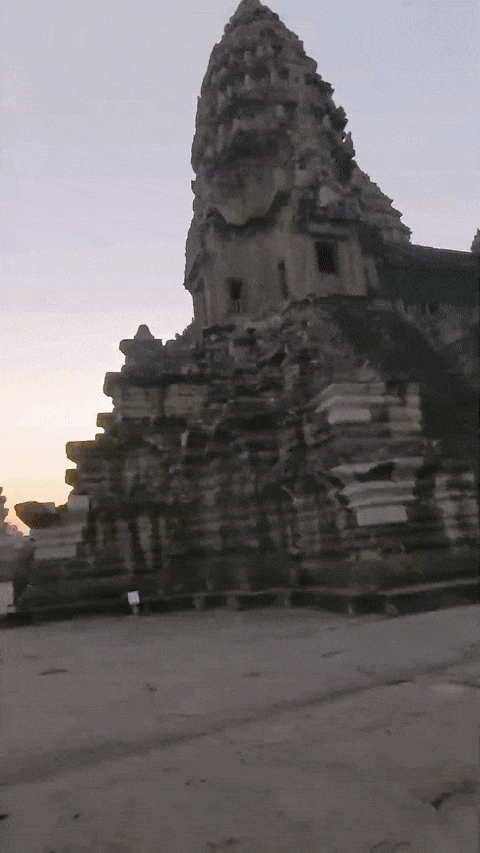
Here, we tucked into our breakfast boxes of hard-boiled eggs, bread and marmalade as the sun rose. It’s not often we get up before sunrise (let alone arrive at our destination!) but my goodness was it worth it.
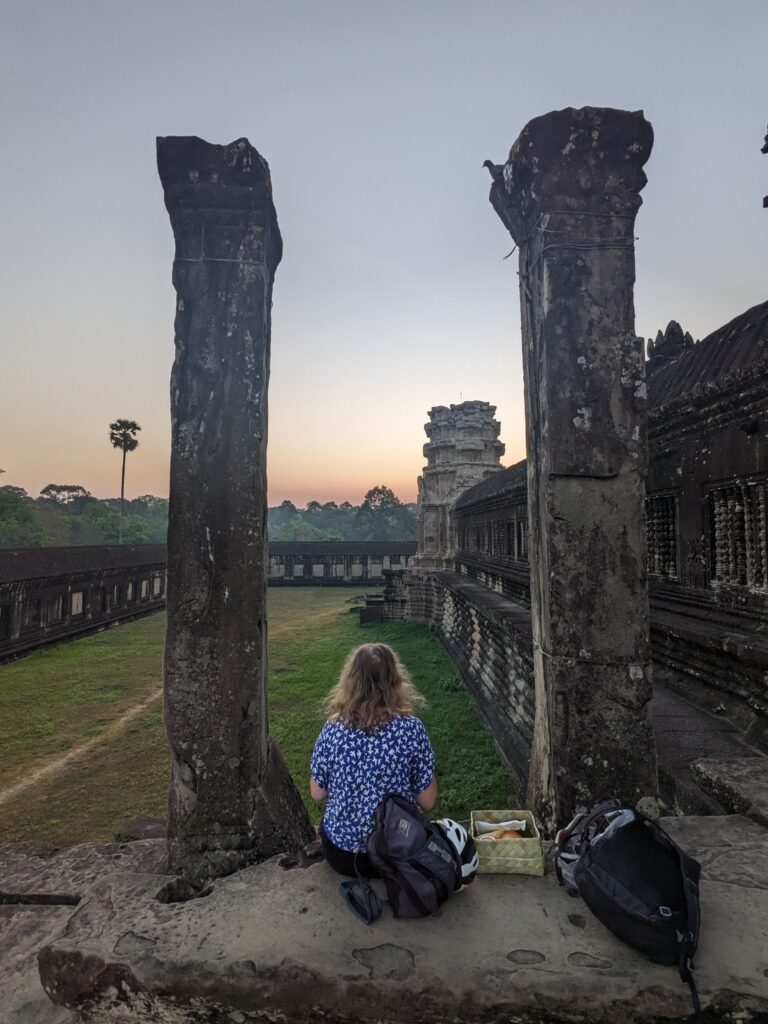
We spent the rest of the morning exploring the other temples within Angkor Thom. At its centre is Bayon temple, a huge (if slightly bizarre) temple featuring 216 giant faces which apparently resembled the king who had ordered the temple’s construction. Many of the faces aren’t immediately apparent following roughly 800 years of weathering, but it’s one of those situations where the more you look, the more you find peering back at you from the rock.

Finally, we deployed what little energy we had left to climb the (incredibly steep) steps of Baphuon temple. In addition to offering great views from its top level, this temple also has an interesting backstory of relatively recent history. In the 1960s, it was painstakingly disassembled for restoration, block by block, and meticulously catalogued to allow it to be reassembled again. However, the Khmer Rouge regime who took power in 1970s did not approve of such activity, and destroyed the records. This left behind one of the world’s largest (and heaviest!) jigsaw puzzles, which has since only been partially completed. The thousands of stone blocks that still cover the area surrounding the temple are evidence of how much work still remains. It slightly reminds me of the handful of screws that I often have left over after taking something apart and putting it back together again, though I guess I don’t have such a good excuse.
While our stay in Siem Reap was longer than we’ve stayed anywhere for months now, I’m so glad we had the time to do it some justice. And with that, our somewhat brief foray into Cambodia was over already, as we boarded an 8.5-hour bus to Bangkok, the beating heart of Thailand.
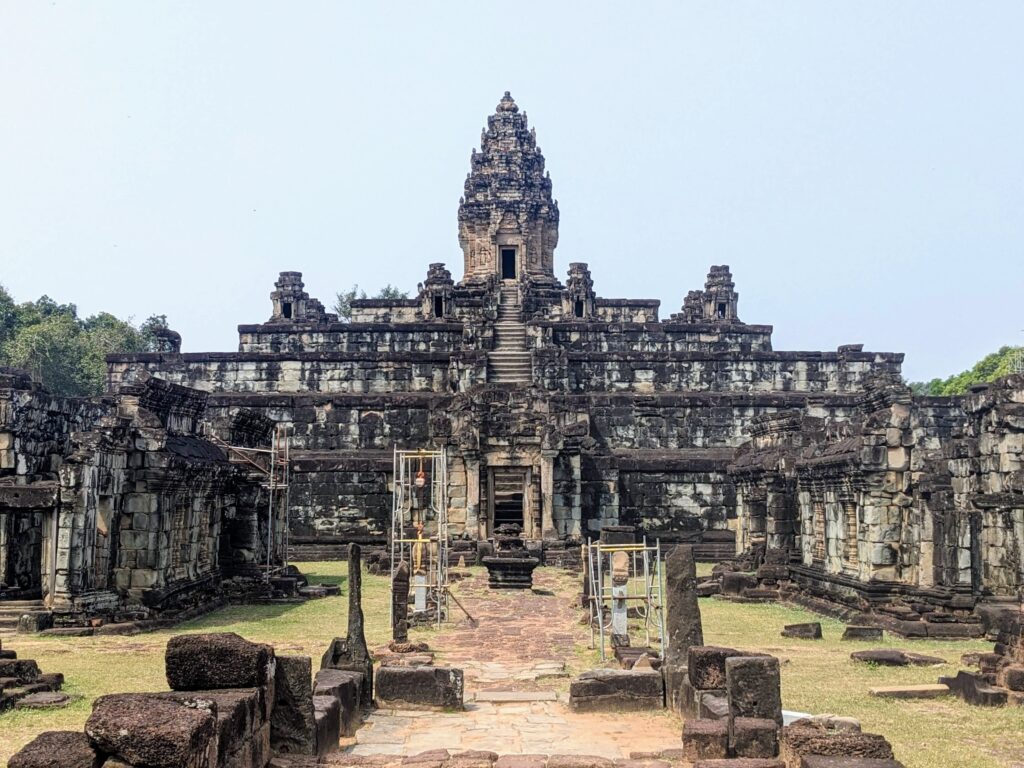
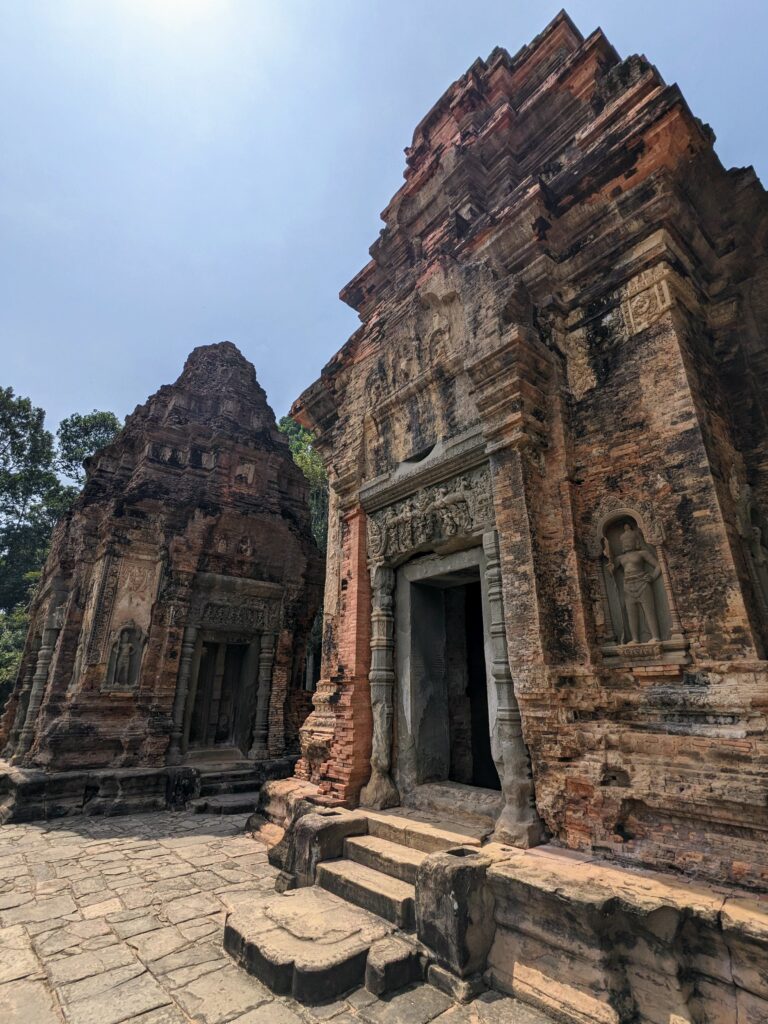
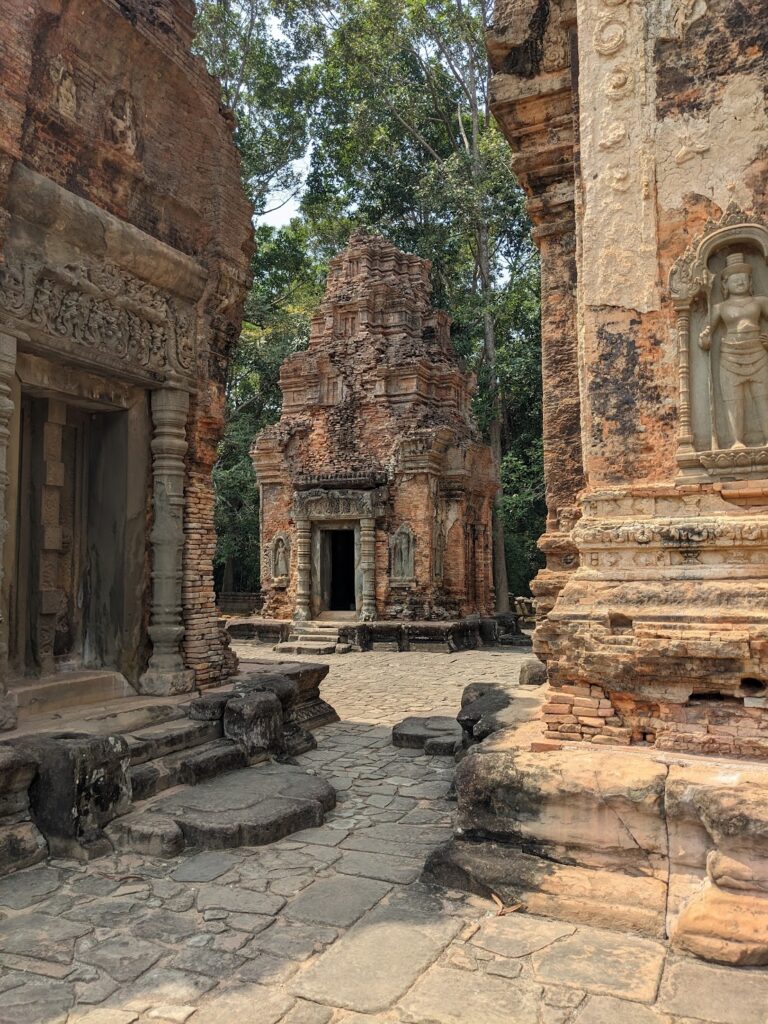
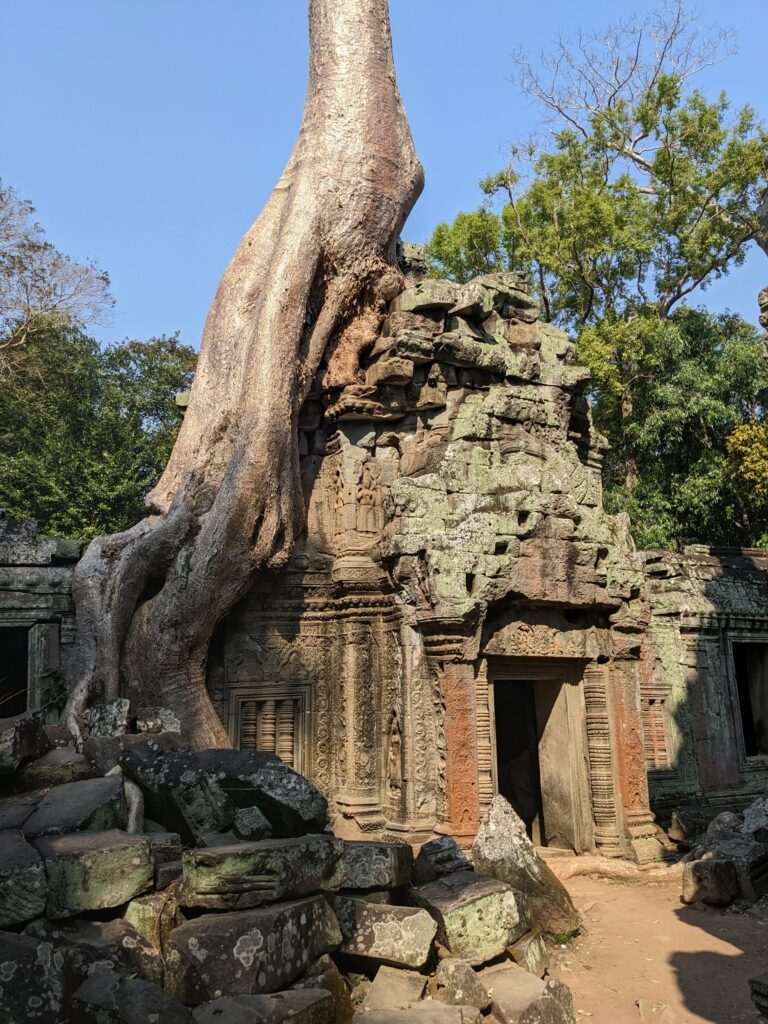

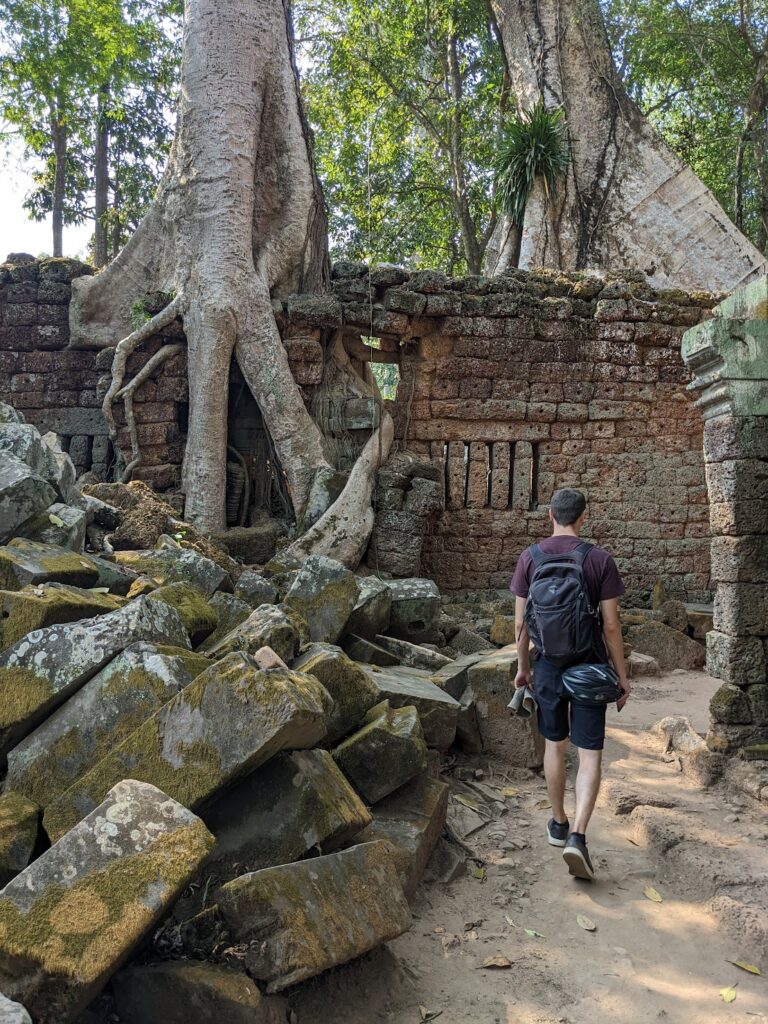

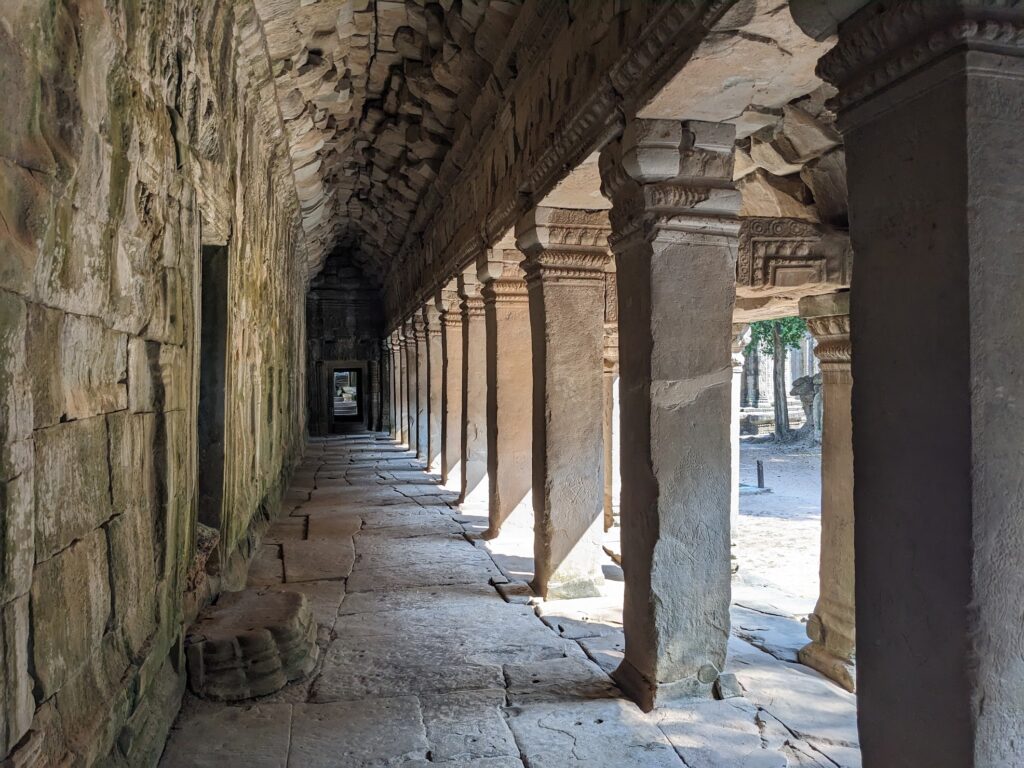
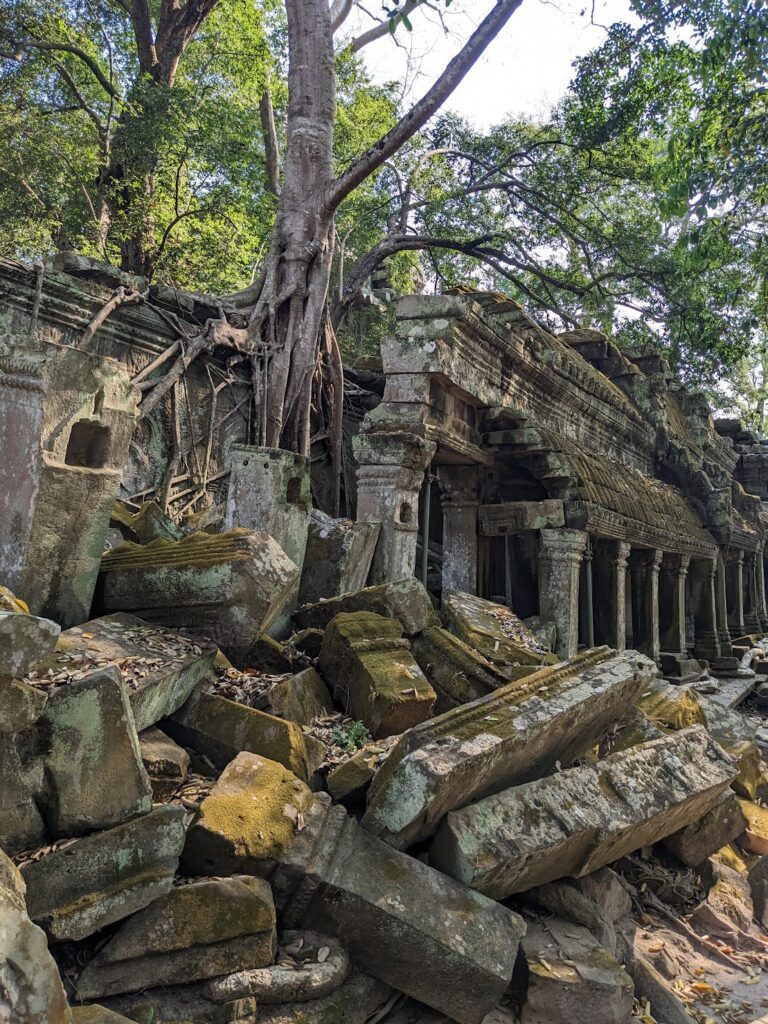
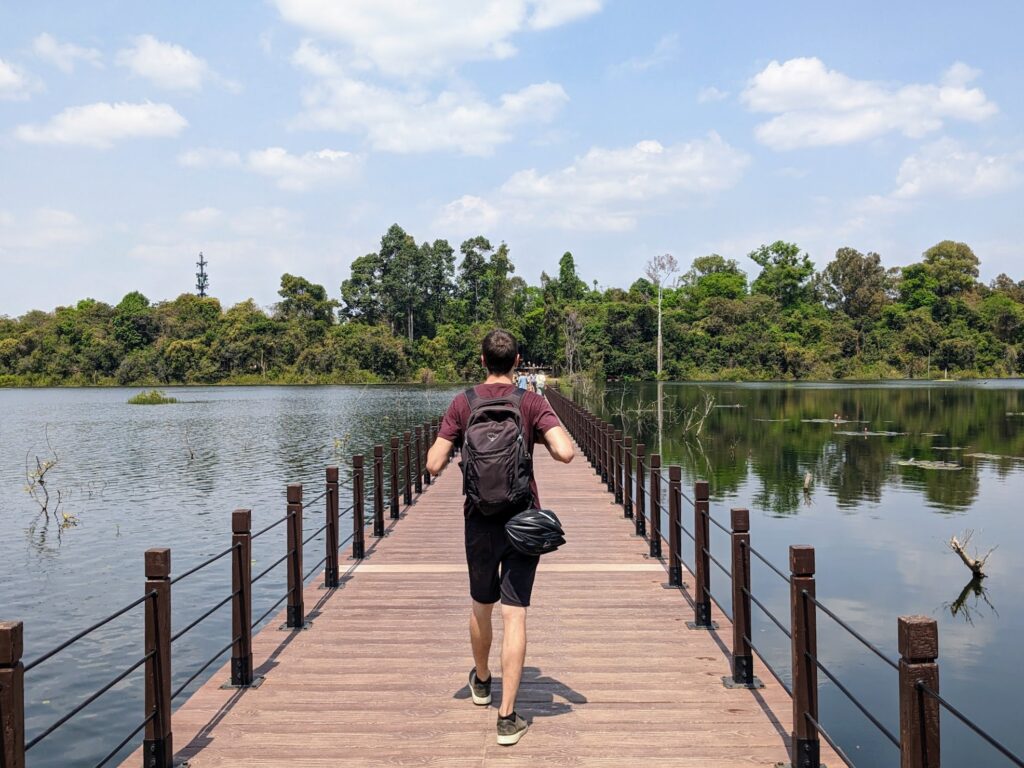
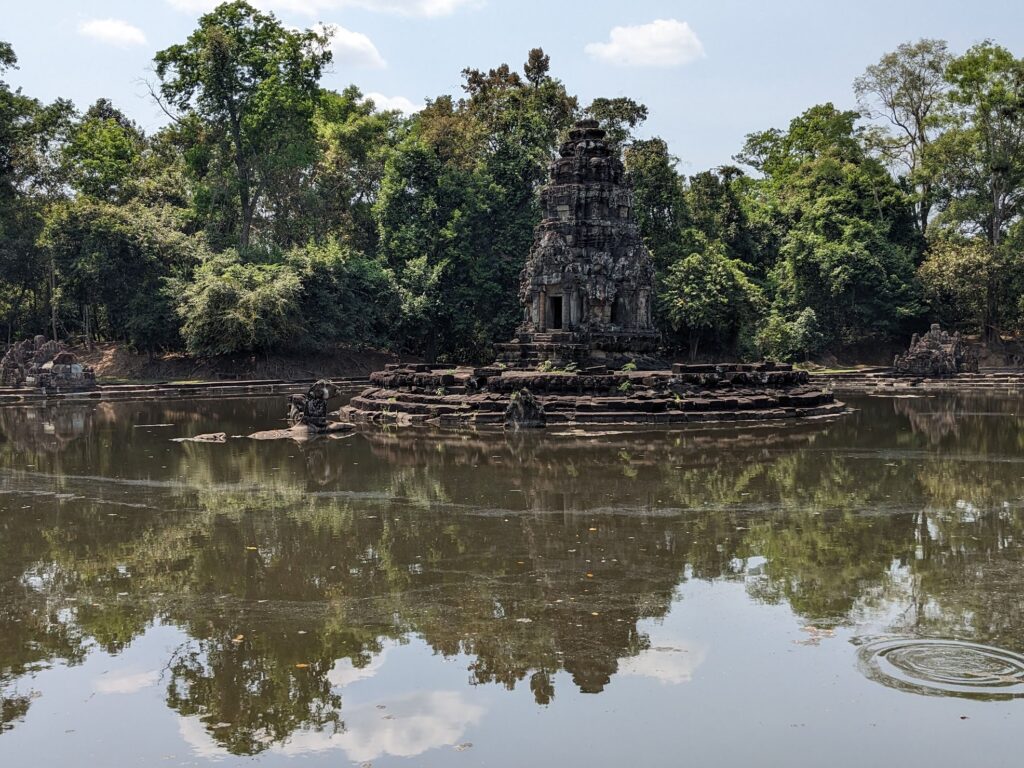
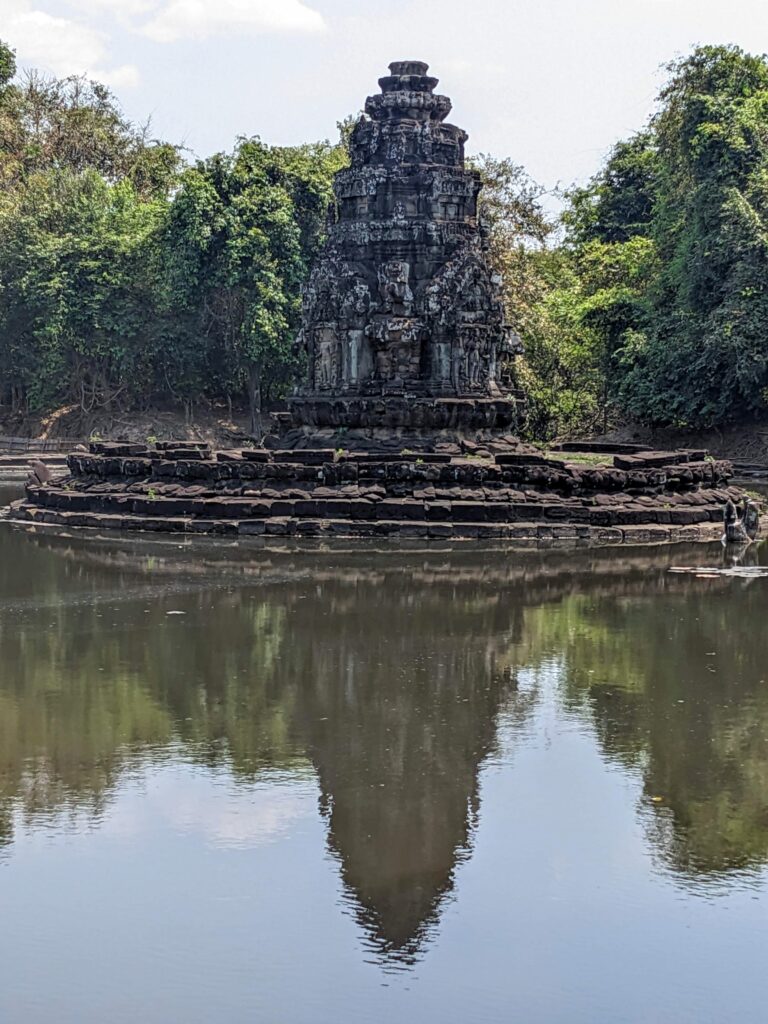

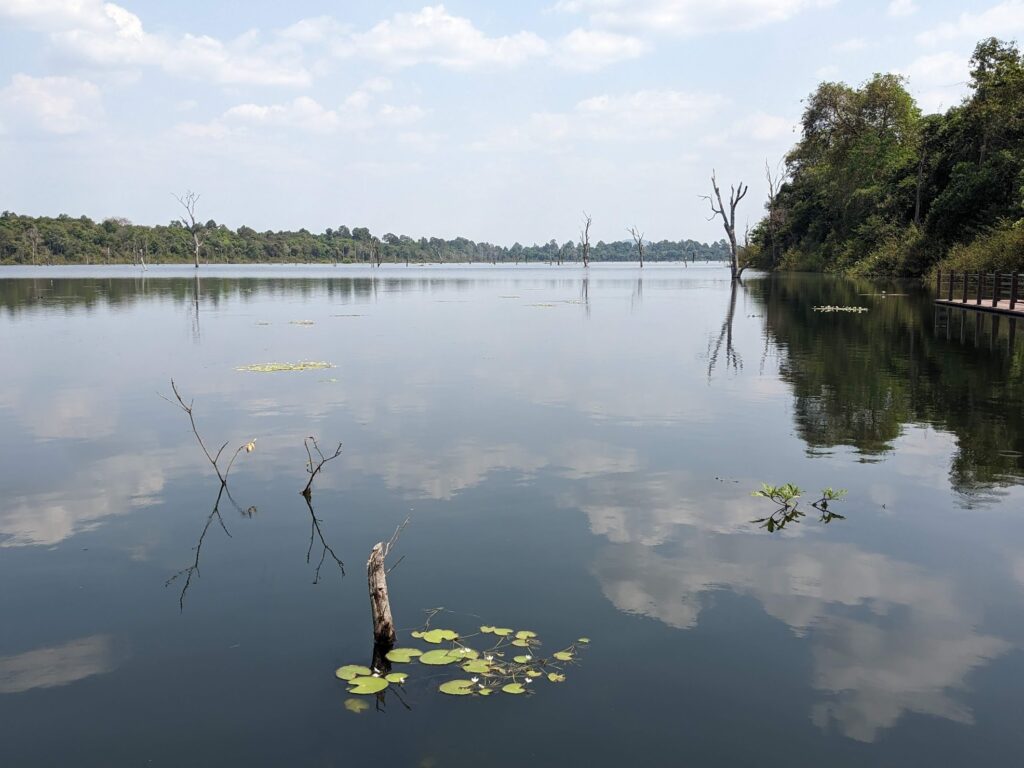
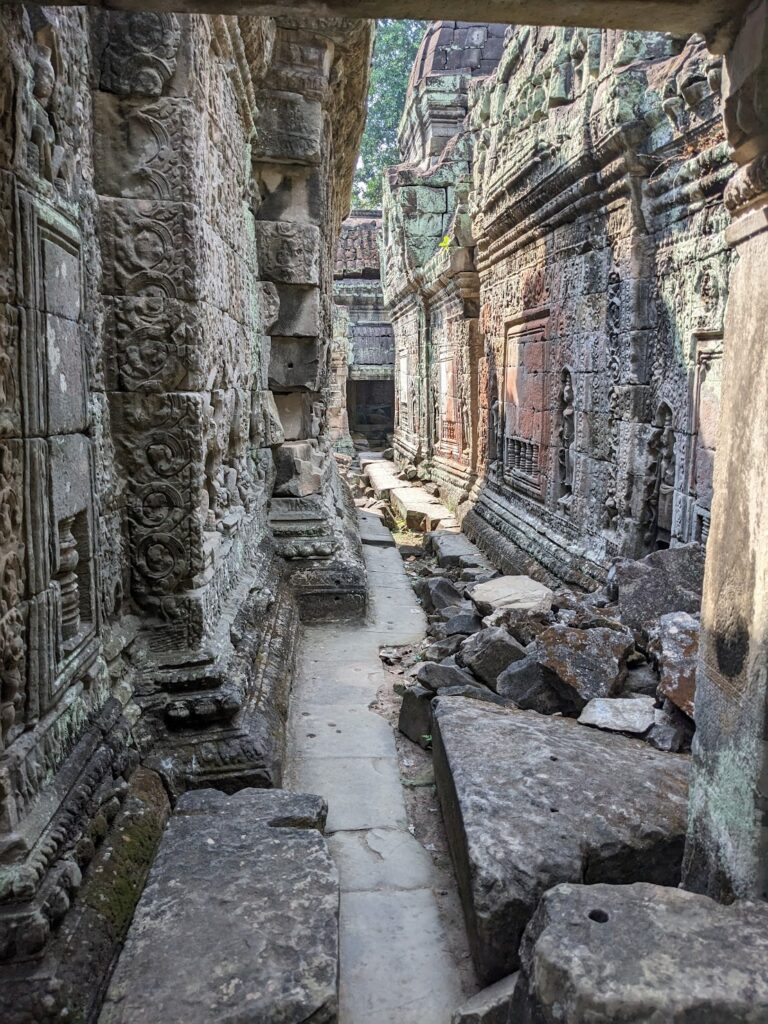
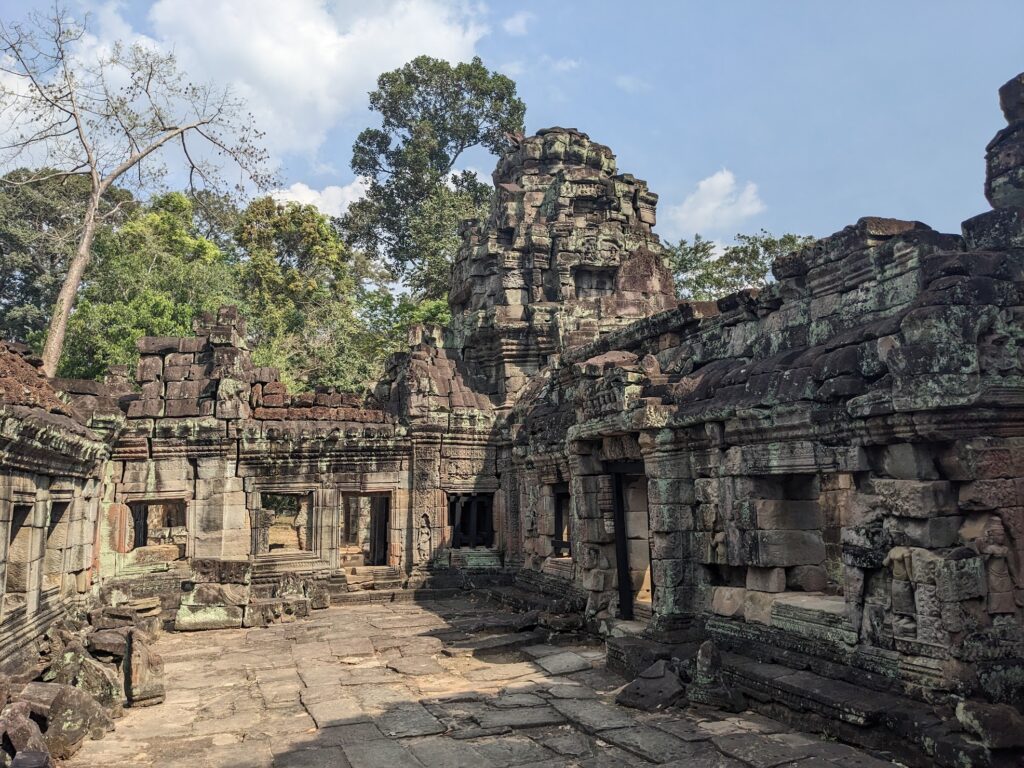
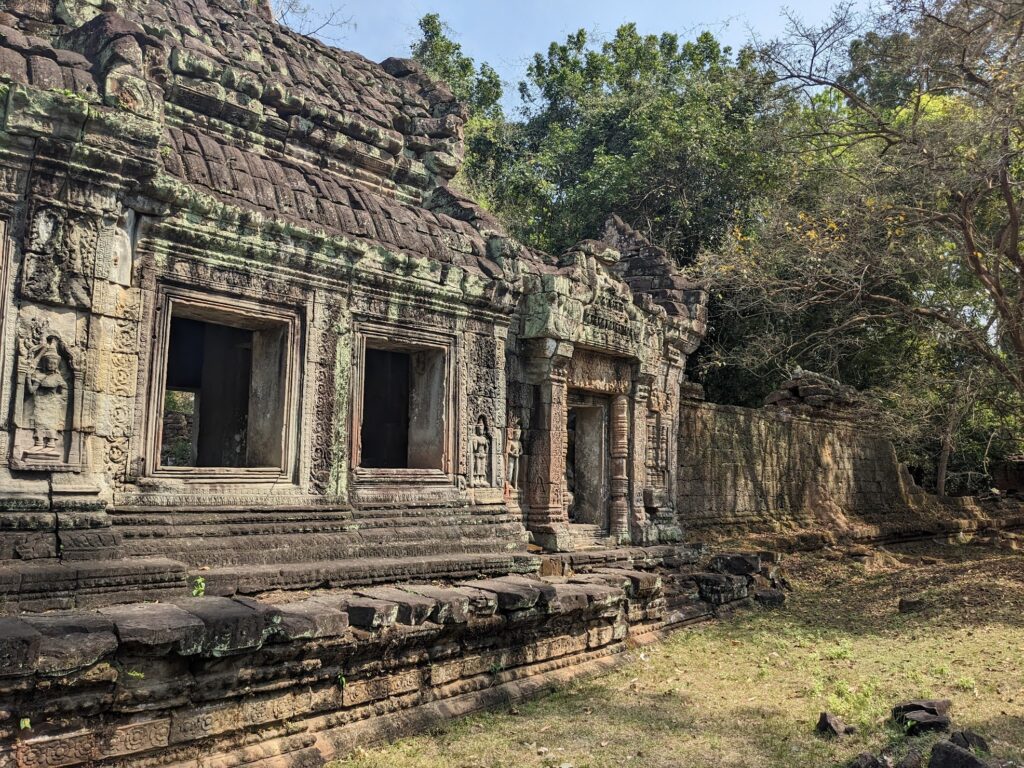
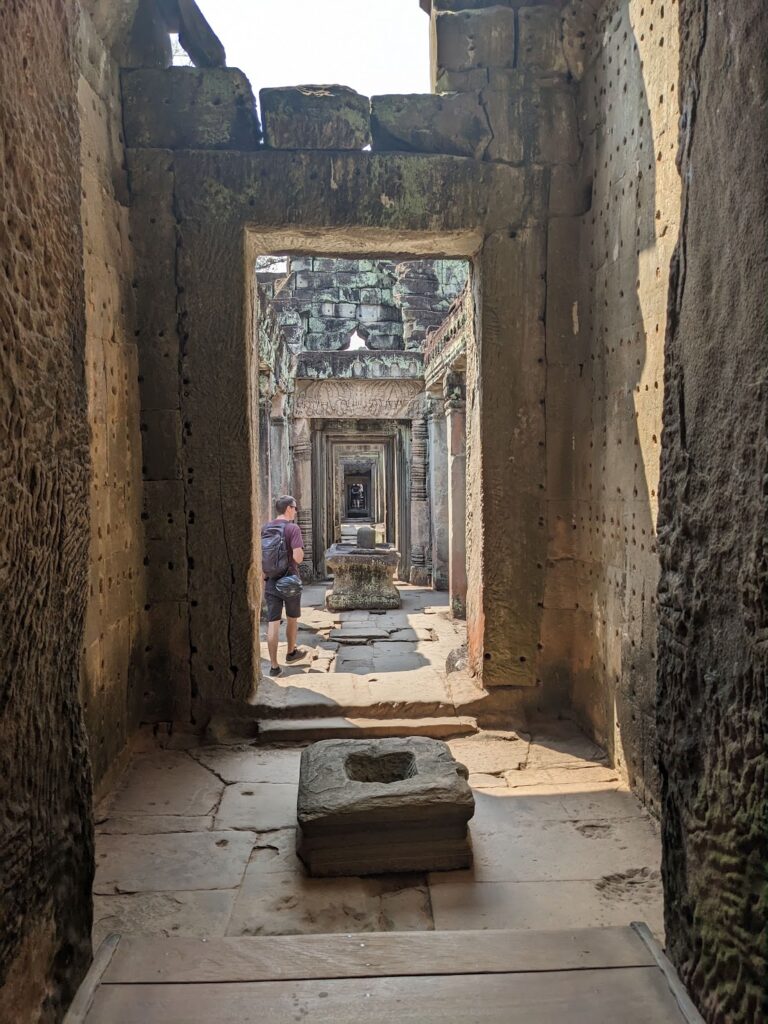
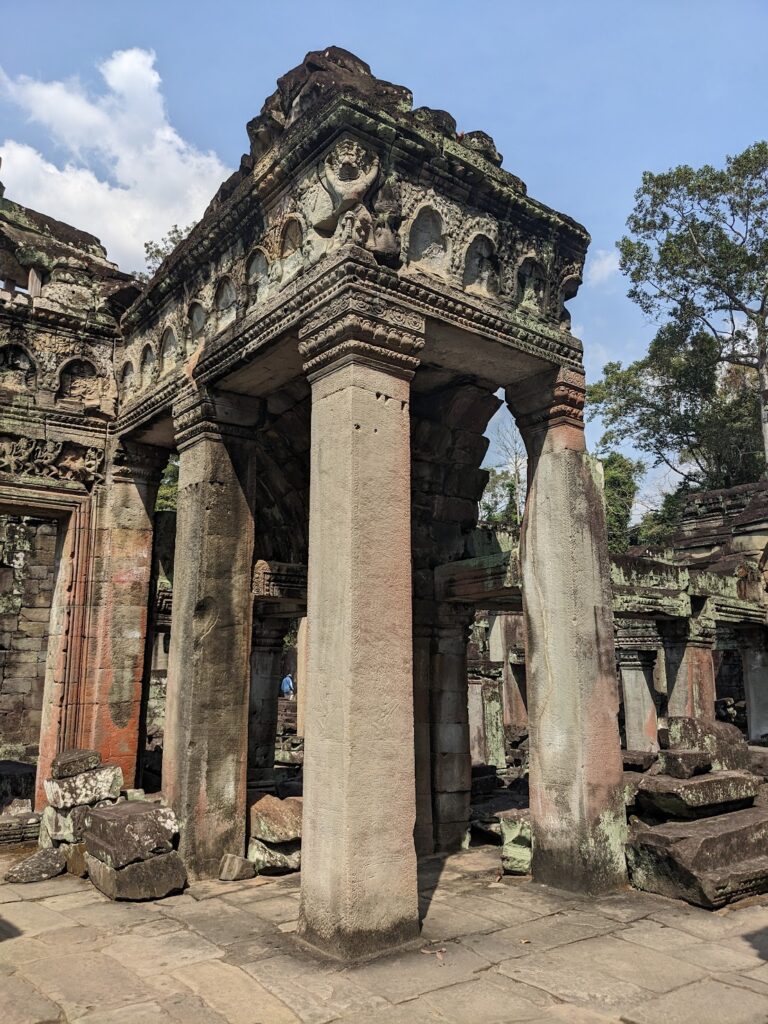
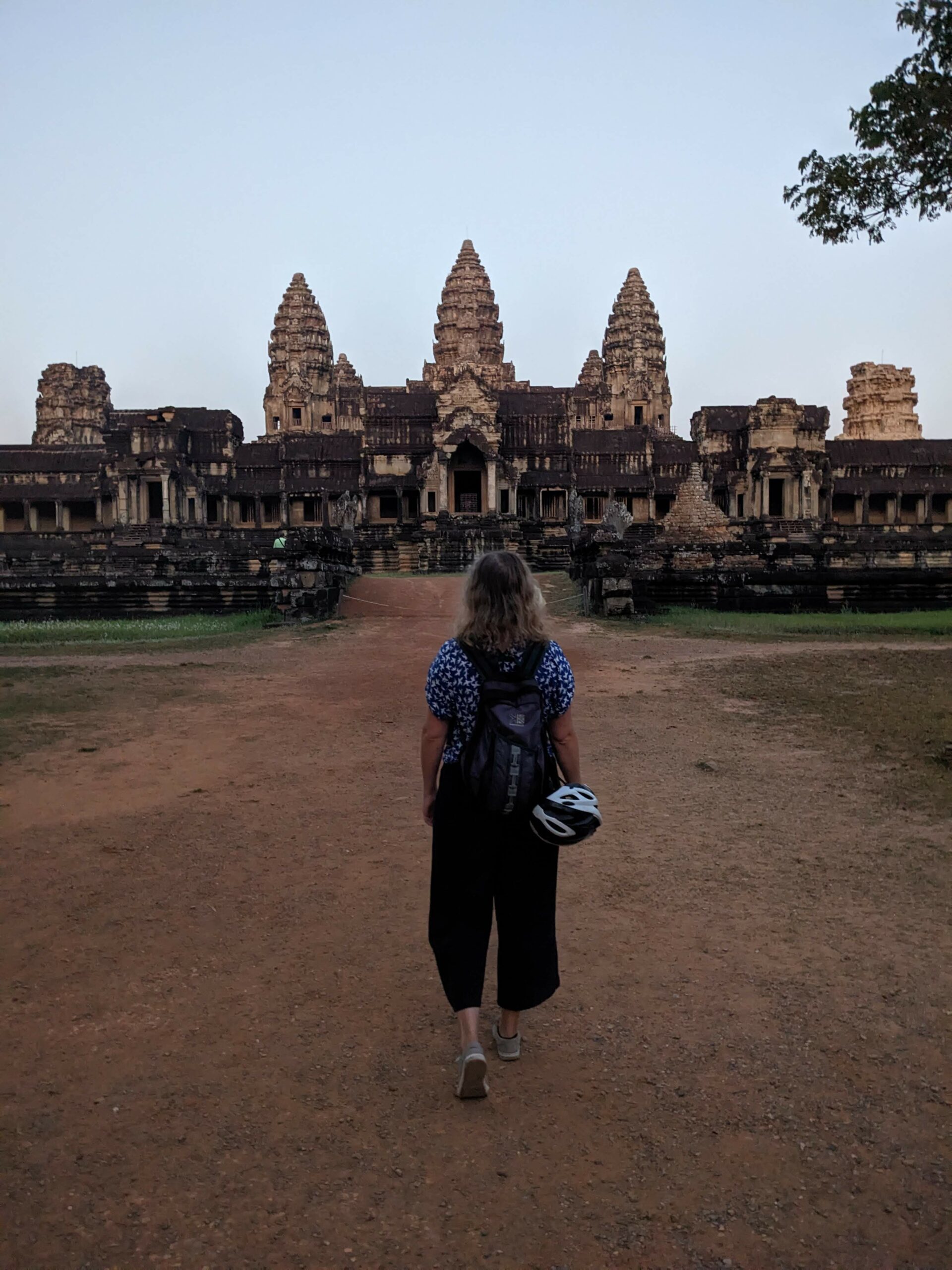
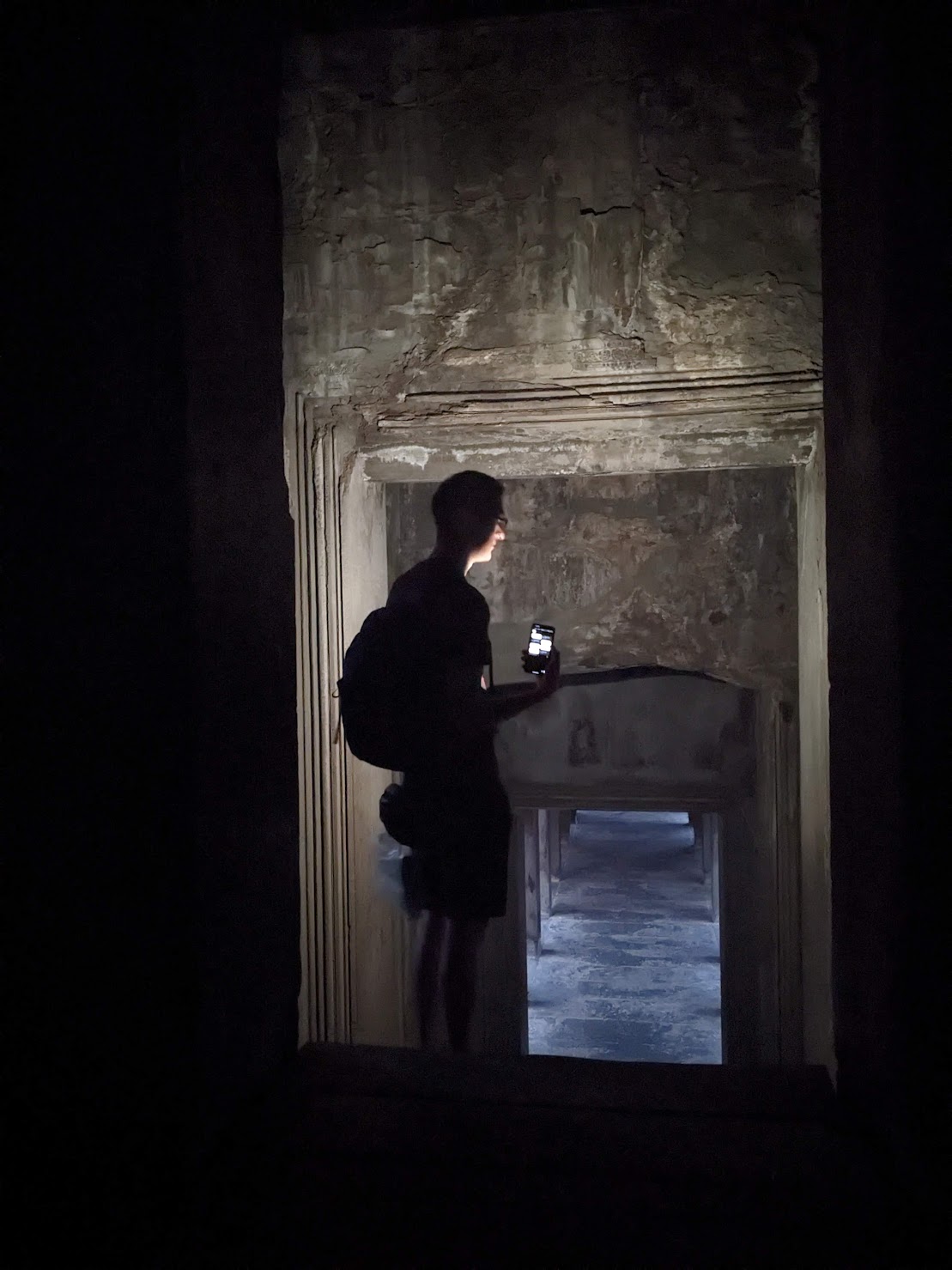
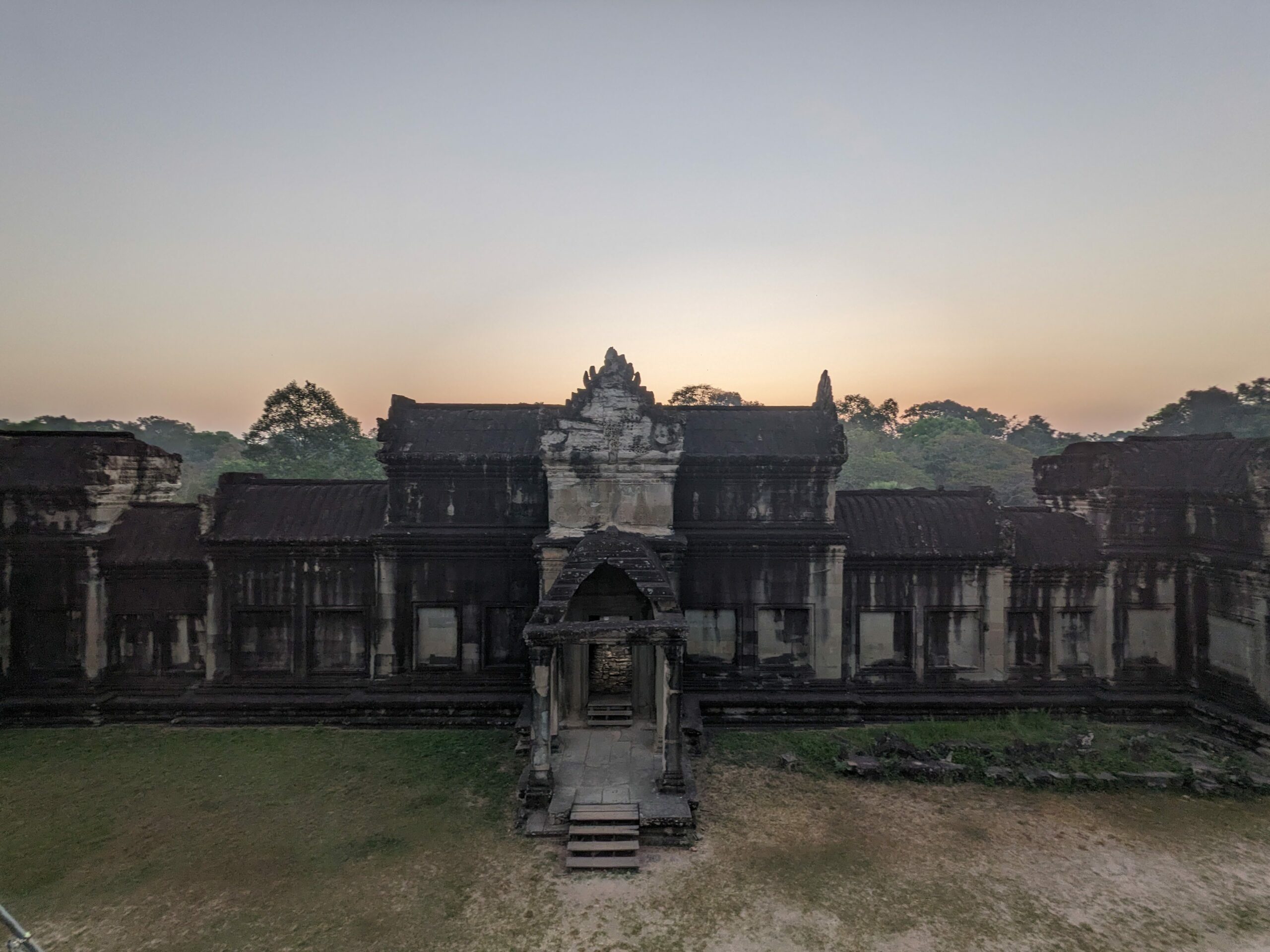

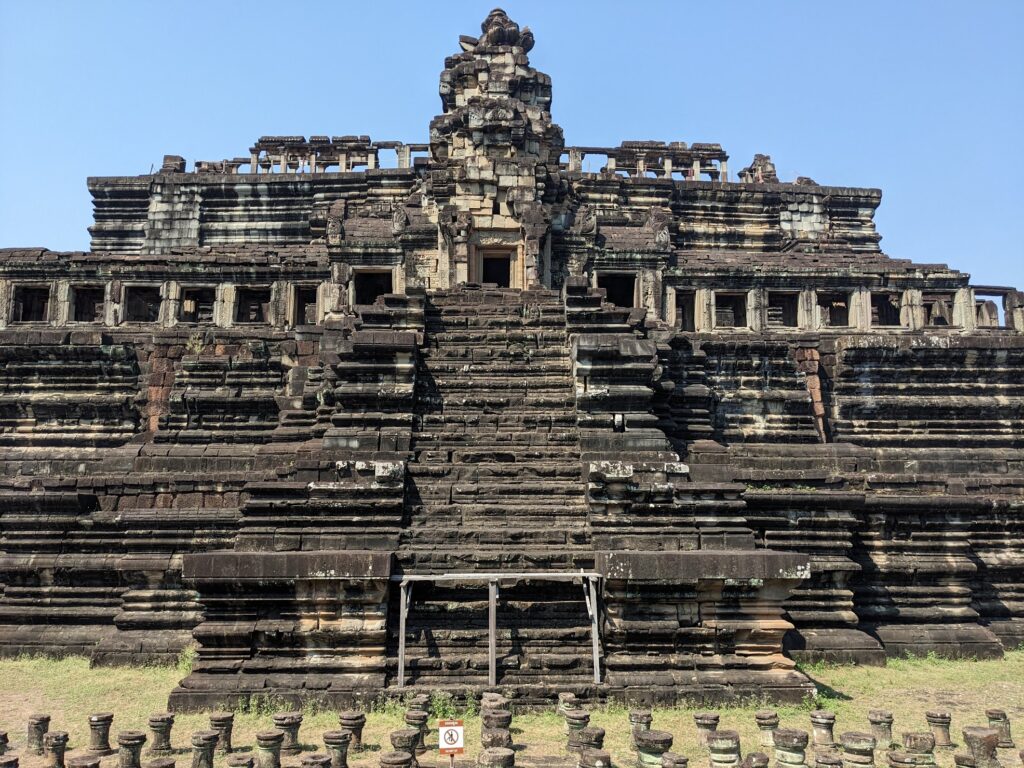
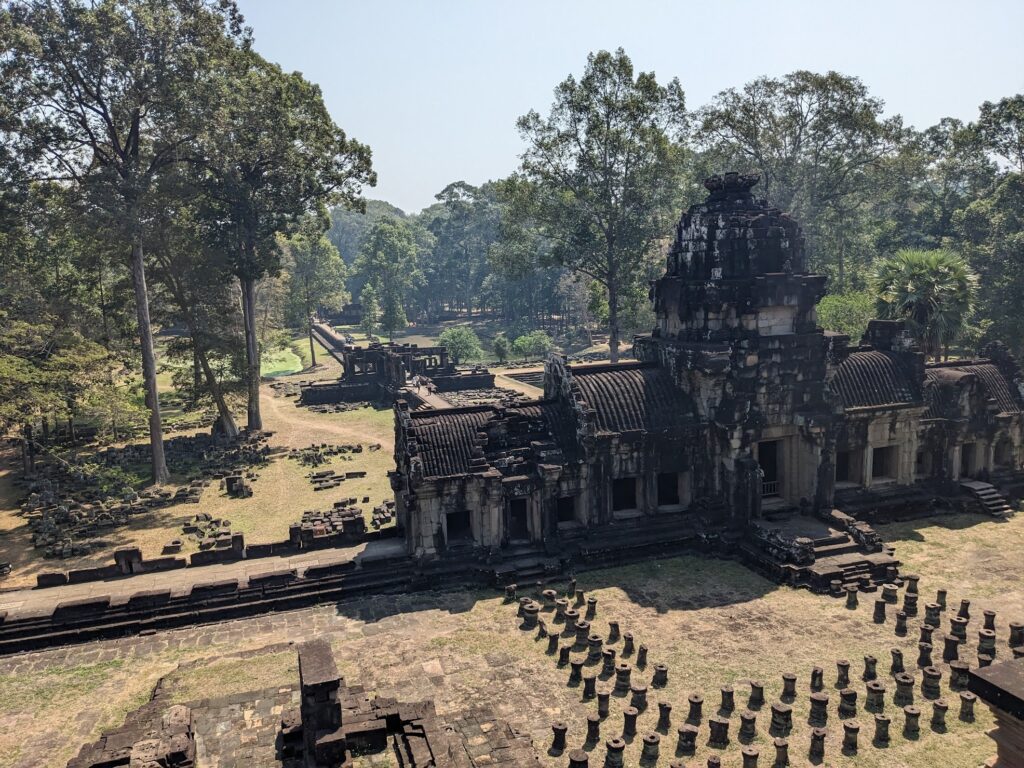
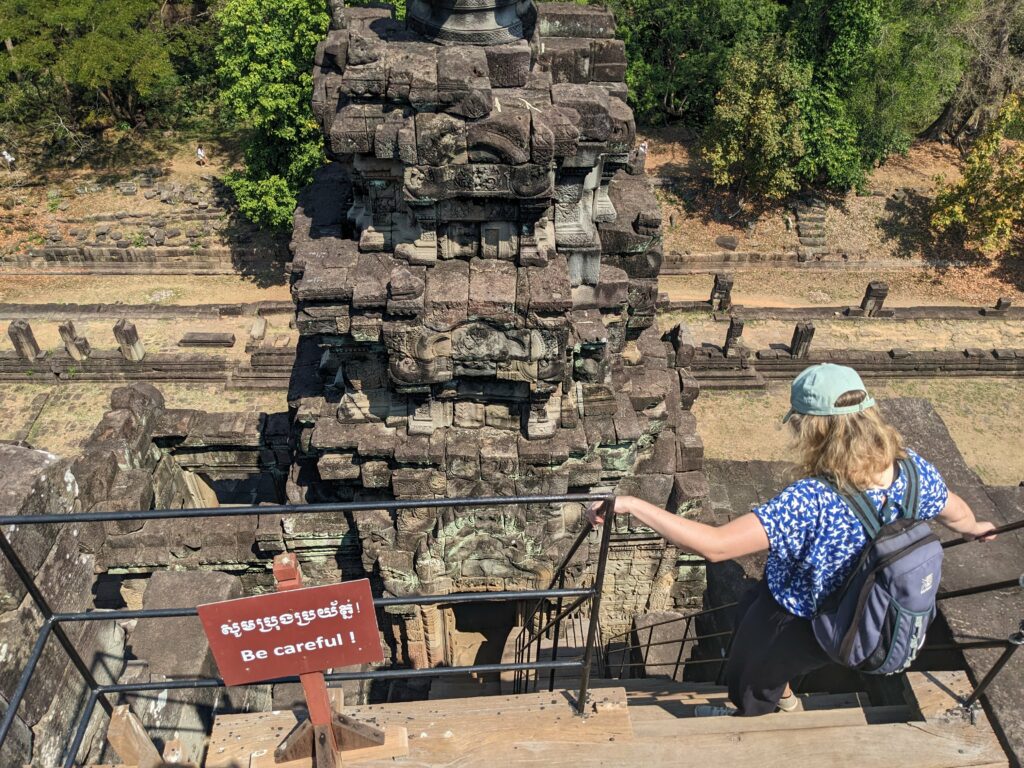
What an amazing trip you are having. Can’t say I’m not just a little bit jealous! Think your decision to hire bikes was inspired!
I think it was inspired and stubborn in equal measures!